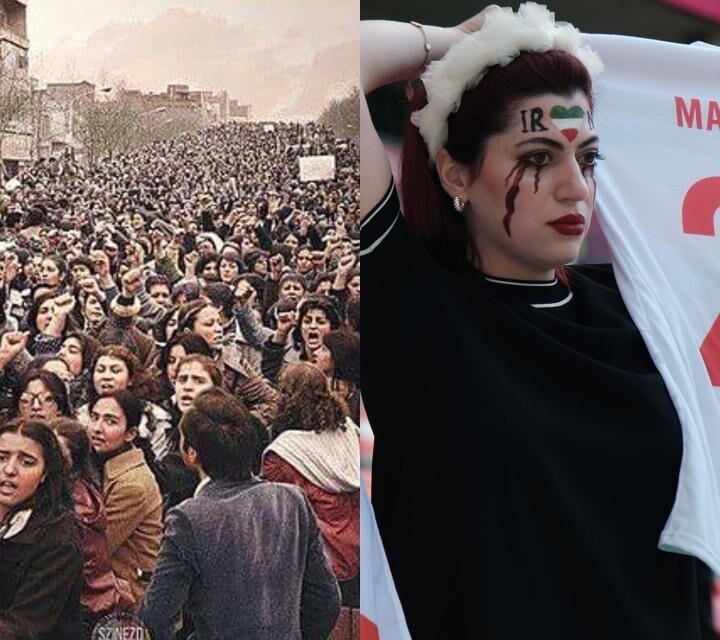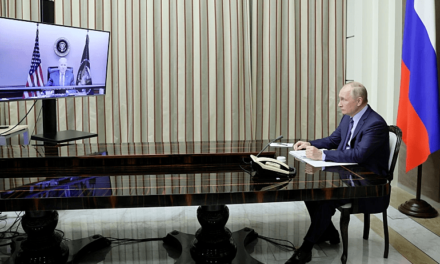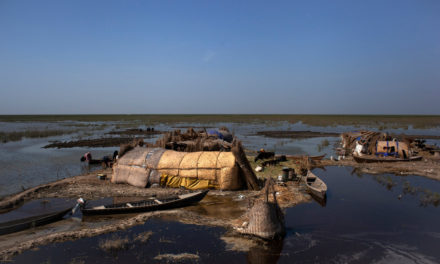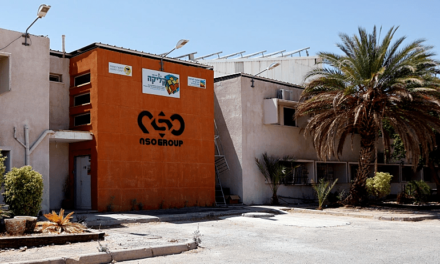by Sepideh Zamani/ Washington Institute for Near East Policy
Activists fighting for women’s rights in Iran today have learned from their predecessors’ mistakes and are more determined than ever to achieve gender equality.
The uprisings in pursuit of women’s rights in Iran are now internationally recognized since the death of Mahsa Jina Amini, who was killed in the custody of Iran’s so-called morality police on September 16, 2022. Several months later, a startling majority of Iranian parliament members called on the judiciary to issue the death sentence for those arrested in the women’s rights protests. This coercive maneuver clearly aims to shut down an unflinching movement. Witness to the perseverance of my countrywomen, I can’t help but think about the women who joined the 1979 Islamic revolution, which led them to lose their rights. How could they have supported a government that would strip them of the freedoms they are fighting so hard for today? And how do their actions impact the women currently fighting on the street?
The Iranian women’s movement dates to the 18th century Qajar dynasty, where feminist causes were promoted in the name of progress. But it wasn’t until the Pahlavi era (1925-1979) that women had the opportunity to excel, with women becoming educated, high-wage earners and even playing a role in Parliament. Women were granted financial aid for higher education and the right to vote. And with the Family Protection Law (1967), women gained legal tools to take control of their personal lives with legal changes to child marriage, divorce, and custody laws in their favor. While the Pahlavi era has its critics, its impact on women’s achievements are clear.
In 1979, much of the social unrest came in response to Westernization and fear of capitalism, which many felt created economic disparity and threatened traditional culture. Yet traditional Iranian culture includes a wide range of customs and religions—not limited to the specific Islamic culture that would come to dominate Iran under the Islamic Republic of Ayatollah Khomeini. In the initial climate of revolutionary fervor, many of Iran’s female intellectuals joined the Islamic revolution in favor of the democracy Khomeini initially promised.
One such woman was Nooshabeh Amiri, former political editor of Kayhan and the only woman who interviewed Ayatollah Khomeini. During this interview, She confronted him about the role of feminism in this revolution: “Some people say the Islamic revolution is a regressive movement, but accepting me shows the Islamic revolution is a progressive movement.” Khomeini replied, “We didn’t ask you to come. Islam doesn’t need to be progressive. Progress is not what you think.”
Amiri ended up publishing the interview with the title, “In Islamic Government, There is No Dictatorship” and gave Khomeini the benefit of the doubt. With the promise for democracy, did she ignore the warning signs? In March 2021, she reflected on that conversation for IranWire. “For the first time in my professional life,” she said, “I was introduced to the concept of fear and a situation whereby the interviewee tells you what to write.”
On March 7, 1979 Ayatollah Khomeini announced a mandatory Islamic dress code, whereby women lost most of their rights. Rollbacks in family law rights occurred, and the now infamous morality police were established to enforce them. Today, the authorities arrest thousands of women for their clothing. The punishment is a prison sentence, flogging, or a fine. Women get slapped, beaten, and dragged to police cars, in public and sometimes even by catchpole—a long pole with a noose at one end, used for controlling animals.
The day after Khomeini’s dress code announcement, tens of thousands of women in Iran took to the streets of Tehran in protest. Yet on March 9, Simin Daneshvar—novelist, poet, and renowned feminist—published an article in Kayhan in support. “If the price of winning the revolution is covering my head, I will do it proudly,” she said. Did she believe wearing a Hijab was the only price?
Amiri and Daneshvar were not alone in overlooking the potential loss of women’s rights during these early days of the revolution. Shirin Ebadi, former female judge, lawyer, and founder of a human rights center in 2001, admitted her mistake and issued an apology through the media.Feminist and social critic Nadereh Afshari escaped the Islamist Marxist (MEK) camp she had willingly joined to later report on the abuse of women and children in these camps. There were many more.
What is striking is that the extremists’ speeches before 1979 showed warning signs. In one, Ayatollah Khomeini outrightly condemned Pahlavi for granting women rights in the white revolution, saying it could cost him his crown. But, “in the excitement of the revolution, nobody paid much attention to what Ayatollah Khomeini was saying in Paris,” said Haleh Esfandiari, Iranian political and women’s issues scholar. “He said women will have a role in the society but within an Islamic framework. Nobody bothered in those days to ask, ‘What is the Islamic framework?’”
Was half a century of progress under Pahlavi long enough for women to assume their rights were unshakable? Many female intellectuals like those mentioned above were ultimately safe, with the family connections and funds to escape the country if needed—which many of them did. Many today say they were naïve to believe Khomeini’s promises, but they do so from the safety of the diaspora while women inside of Iran continue to struggle with the consequences.
Motivations were by no means homogenous, though secretive communist ideals—by definition anti-capitalist (and anti-Pahlavi)—were widespread. Some women joined because they in fact opposed gender equality, sometimes in principle, sometimes in solidarity with their husbands. Overall, the desire for change in 1979 overshadowed the progress made for women during the 50 years prior to the revolution, and women’s freedoms consequently proved more fragile than anyone knew.
While the subsequent generation of women lost access to fifty years of progress and instead withered under the restrictions of Khomeini, that is not the end of the story as we can see today.
Even before this most recent protest movement, it has become evident that what women achieved during Pahlavi’s era was so progressive and so widely embraced during that period, that the freedom and opportunities women enjoyed then proved impossible to erase in the minds of the mothers and fathers of the women of today. Consequently, Iranian women know what freedom is—in memory if not in practice—and their attitudes now reflect that. The connection to the free world through the internet also helps foster their understanding of what women experienced before 1979. But the memories of freedom and the culture built during Pahlavi’s era have also been kept alive in photo albums and family stories. This legacy has given many Iranian women the confidence to long for what their predecessors lost. From this foundation, that old, strong culture can be regenerated.
Listening to the young generation of feminists, it appears that most stand quiet regarding the mistakes that the women made during the revolution, but there is solidarity to consider, and there is no time to waste with regret or blame. Despite the Islamic regime, women of the 21st century never stopped fighting for their freedom, for gender equality, and against the Hijab, a symbol of Khomeini’s revolution and for many, a clear symbol of oppression.
On December 27, 2017 as protests swept through Iran, on the Revolution Street in Tehran Vida Movahed, a women’s rights activist, stood on a utility box and symbolically took her white headscarf off, attached it to a stick and waved it at crowed to protest the mandatory Hijab. It was the first time after the 1979 revolution that an Iranian woman took off her Hijab in public display. She was arrested for this act. Her bold statement initiated a movement called “The Girls of Revolution Street” and since then, many girls all around Iran have repeated her act in protest, bravely breaking the law. Vida Movahed’s campaign is only one of the hundreds of small acts of rebellion that Iranian women have been making since they lost their rights. All of these demonstrations have culminated in the explosion we see today.
Now, months after the death of Mahsa Jina Amini, many more Iranians have lost their lives in the fight for gender equality and freedom in Iran. Thousands are arrested and many have died from torture, some have been executed, and many are on death row. Nevertheless, the fight for a return of women’s freedoms has just begun. Iranians are fighting harder than ever to regain their rights. They have learned not to repeat the mistakes of earlier feminists and trade women’s rights for any other promise. May they march on.





